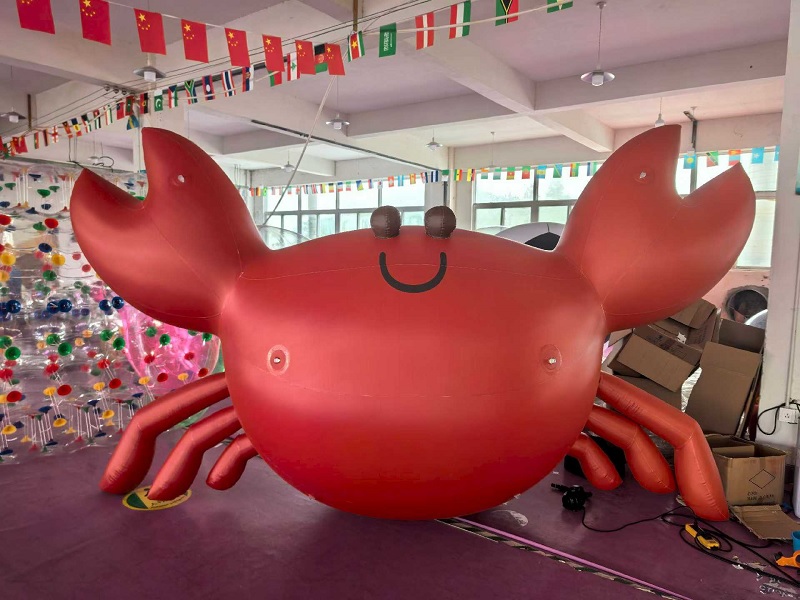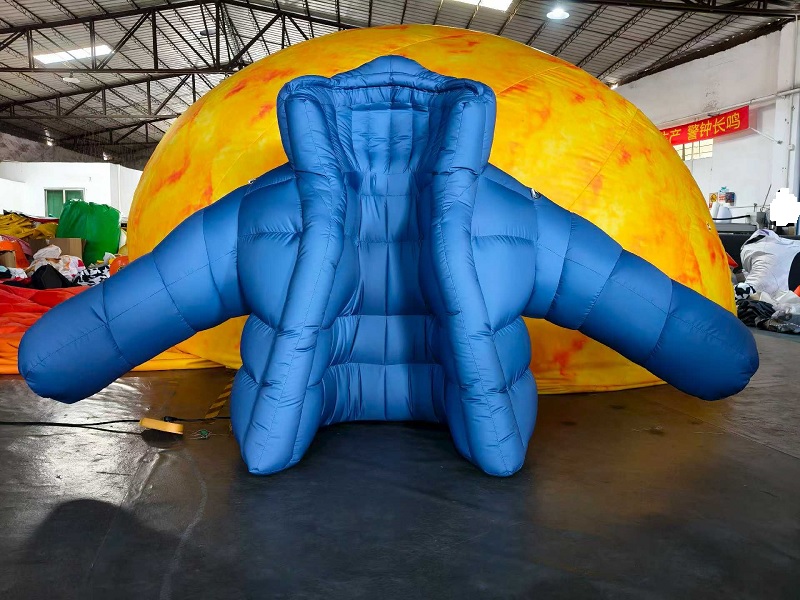On the outskirts of Moscow, several workers are "creating" a weapon with a green fabric and an air compressor.
In a short while, a streamlined, grayish Mig-31 fighter jet appears: a full-bodied fuselage, powerful wings spread out,
and the unique red star mark of the Russian Air Force on the body. This is an inflatable fake aircraft, but from 300 meters away, it looks very realistic.
In Russian military terminology, there is a "Maskirovka" regulation, which relies on concealment, deception,
and the spread of false intelligence and other strategic deception methods to hinder enemy decision-making,
allowing one's own soldiers to maintain the advantage of surprise.
This is also a tactical requirement that the Russian army has always adhered to, and inflatable weapons are in line with this tactical principle.
The military engineer responsible for developing inflatable weapons said: "In fact, as long as you have some understanding of the history of war,
it is not difficult to see that deceptive methods can always win wars, but no one has ever won by legitimate means." Historically,
Russians have achieved unprecedented success with camouflage techniques. During World War II,
the United States and its allies "created" a complete fake army including inflatable weapons before the landing in Normandy,
implementing strategic deception, which made the Germans believe that the Allies would land in Calais until the day of landing.

It is reported that the largest inflatable weapon company in Russia is a toy company called "Rusbal".
The company initially made hot air balloons, inflatable children's game sets, and inflatable clothing,
and later gradually switched to manufacturing inflatable models of various weapon systems.
At present, the company can produce all important Russian military equipment and facilities,
including Mig-31 and Su-27 fighters, T-72 and T-80 main battle tanks,
and the complete inflatable version of the S-300 air defense missile battalion recently sent to Syria.
In addition, the company also sells inflatable command and control tents, radar stations, and even "Iskander" short-range tactical ballistic missiles.
According to reports, the cost of a single inflatable T-80 tank is $16,000, and the inflation time is within about 5 minutes.
It only costs $496,000 and two and a half hours to build an entire battalion of 31 fake tanks.
What's more interesting is that in order to make the appearance of the "tank battalion" look realistic enough,
the company also sells a device that creates fake tank tracks on the ground.
It is reported that the Russian military has always been the main customer of this company.
Due to confidentiality, the company is unwilling to disclose how many inflatable tanks it has produced.
But the person in charge of the company said in an interview that its production has been rising in a straight line over the past year.
In the 10-year, $660 billion military reorganization project that Russia started in 2010, it is believed that the contract with this company is just a small part of it.
The factory currently has 80 full-time employees, most of whom are sewing inflatable weapons for the military.
However, in a real war, can inflatable weapons really fool the enemy? It probably depends on the situation.
For trained eyes and the reconnaissance systems of the United States and NATO, it may not.
However, Russia's military deception principle is the integration of strategic and tactical camouflage, as well as its application in times of war and peace,
so inflatable weapons will still play a role that is difficult for outsiders to detect.Inflatable Weapons, Blowing Up "Combat Power".
Contact US Catalogue Information
008613539990461 inflatable@bubble-wish.com Water Products Contact Us Terms&Conditions
Open 09:00 am - 06:00 pm / mon - Fri Land Products Blog&News Cookie Policy
Copyright © Bubble Wish 2023-2025 Privacy policy Return Policy





